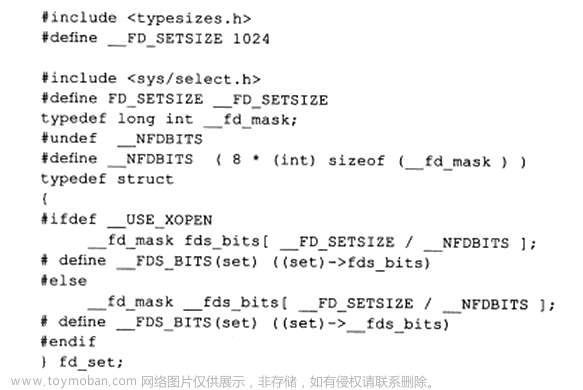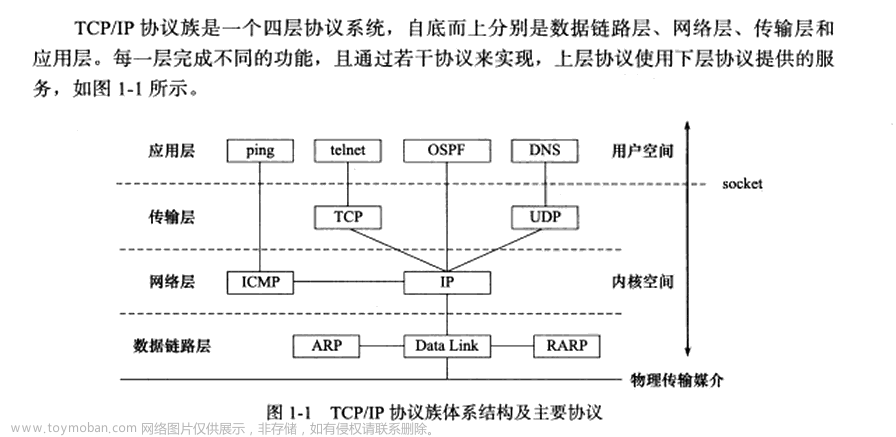目录
一、协程
1.1、greenlet实现协程
1.2、yield关键字
1.3、asyncio
1.4、async & await关键字
二、协程意义
三、异步编程
3.1、事件循环
3.2、快速上手
3.3、await
3.4、Task对象
3.5、asyncio.Future对象
3.5、concurrent.futures.Future对象
3.7、异步迭代器
3.8、异步上下文管理器
四、uvloop
五、实战案例
5.1、异步redis
5.2、异步MySQL
5.3、FastAPI框架
六、总结
一、协程
协程不是计算机提供,程序员人为创造。
协程(Coroutine),也可以被称为微线程,是一种用户态内的上下文切换技术。简而言之,其实就是通过一个线程实现代码块相互切换执行。例如:
def func1():
print(1)
...
print(2)
def func2():
print(3)
...
print(4)
func1()
func2()实现协程有这么几种方法:
-
greenlet,早期模块。
-
yield关键字。
-
asyncio装饰器(py3.4)
-
async、await关键字(py3.5)【推荐】
1.1、greenlet实现协程
pip3 install greenletfrom greenlet import greenlet
def func1():
print(1) # 第2步:输出 1
gr2.switch() # 第3步:切换到 func2 函数
print(2) # 第6步:输出 2
gr2.switch() # 第7步:切换到 func2 函数,从上一次执行的位置继续向后执行
def func2():
print(3) # 第4步:输出 3
gr1.switch() # 第5步:切换到 func1 函数,从上一次执行的位置继续向后执行
print(4) # 第8步:输出 4
gr1 = greenlet(func1)
gr2 = greenlet(func2)
gr1.switch() # 第1步:去执行 func1 函数
1.2、yield关键字
def func1():
yield 1
yield from func2()
yield 2
def func2():
yield 3
yield 4
f1 = func1()
for item in f1:
print(item)
1.3、asyncio
在python3.4及之后的版本。
import asyncio
@asyncio.coroutine
def func1():
print(1)
# 网络IO请求:下载一张图片
yield from asyncio.sleep(2) # 遇到IO耗时操作,自动化切换到tasks中的其他任务
print(2)
@asyncio.coroutine
def func2():
print(3)
# 网络IO请求:下载一张图片
yield from asyncio.sleep(2) # 遇到IO耗时操作,自动化切换到tasks中的其他任务
print(4)
tasks = [
asyncio.ensure_future(func1()),
asyncio.ensure_future(func2())
]
loop = asyncio.get_event_loop()
loop.run_until_complete(asyncio.wait(tasks))
我们将两个函数放到tasks中,启动时会随机选一个函数执行,遇到IO阻塞自动切换。
1.4、async & await关键字
在python3.5及之后的版本。
import asyncio
async def func1():
print(1)
# 网络IO请求:下载一张图片
await asyncio.sleep(2) # 遇到IO耗时操作,自动化切换到tasks中的其他任务
print(2)
async def func2():
print(3)
# 网络IO请求:下载一张图片
await asyncio.sleep(2) # 遇到IO耗时操作,自动化切换到tasks中的其他任务
print(4)
tasks = [
asyncio.ensure_future( func1() ),
asyncio.ensure_future( func2() )
]
loop = asyncio.get_event_loop()
loop.run_until_complete(asyncio.wait(tasks))
二、协程意义
在一个线程中如果遇到IO等待时间,线程不会傻傻等,利用空闲的时候再去干点其他事。
案例:去下载三张图片(网络IO)。
(1)普通方式(同步)
pip install requestsimport requests
def download_image(url):
print("开始下载:",url)
# 发送网络请求,下载图片
response = requests.get(url)
print("下载完成")
# 图片保存到本地文件
file_name = url.rsplit('_')[-1]
with open(file_name, mode='wb') as file_object:
file_object.write(response.content)
if __name__ == '__main__':
url_list = [
'https://www3.autoimg.cn/newsdfs/g26/M02/35/A9/120x90_0_autohomecar__ChsEe12AXQ6AOOH_AAFocMs8nzU621.jpg',
'https://www2.autoimg.cn/newsdfs/g30/M01/3C/E2/120x90_0_autohomecar__ChcCSV2BBICAUntfAADjJFd6800429.jpg',
'https://www3.autoimg.cn/newsdfs/g26/M0B/3C/65/120x90_0_autohomecar__ChcCP12BFCmAIO83AAGq7vK0sGY193.jpg'
]
for item in url_list:
download_image(item)
(2)协程方式(异步)
pip install aiohttpimport aiohttp
import asyncio
INSTALL_AIOHTTP = """pip3 install aiohttp"""
async def fetch(session, url):
print("发送请求:", url)
async with session.get(url, verify_ssl=False) as response:
content = await response.content.read()
file_name = url.rsplit('_')[-1]
with open(file_name, mode='wb') as file_object:
file_object.write(content)
print('下载完成', url)
async def main():
async with aiohttp.ClientSession() as session:
url_list = [
'https://www3.autoimg.cn/newsdfs/g26/M02/35/A9/120x90_0_autohomecar__ChsEe12AXQ6AOOH_AAFocMs8nzU621.jpg',
'https://www2.autoimg.cn/newsdfs/g30/M01/3C/E2/120x90_0_autohomecar__ChcCSV2BBICAUntfAADjJFd6800429.jpg',
'https://www3.autoimg.cn/newsdfs/g26/M0B/3C/65/120x90_0_autohomecar__ChcCP12BFCmAIO83AAGq7vK0sGY193.jpg'
]
tasks = [asyncio.create_task(fetch(session, url)) for url in url_list]
await asyncio.wait(tasks)
if __name__ == '__main__':
asyncio.run(main())
三、异步编程
3.1、事件循环
理解成为一个死循环 ,去检测并执行某些代码。
# 伪代码
任务列表 = [ 任务1, 任务2, 任务3,... ]
while True:
可执行的任务列表,已完成的任务列表 = 去任务列表中检查所有的任务,将'可执行'和'已完成'的任务返回
for 就绪任务 in 可执行的任务列表:
执行已就绪的任务
for 已完成的任务 in 已完成的任务列表:
在任务列表中移除 已完成的任务
如果 任务列表 中的任务都已完成,则终止循环import asyncio
# 去生成或获取一个事件循环
loop = asyncio.get_event_loop()
# 将任务放到`任务列表`
loop.run_until_complete(任务)3.2、快速上手
协程函数,定义函数时候 async def 函数名 。
协程对象,执行 协程函数() 得到的协程对象。
async def func():
pass
result = func() # 协程对象注意:执行协程函数创建协程对象,函数内部代码不会执行。
如果想要运行协程函数内部代码,必须要将协程对象交给事件循环来处理。
import asyncio
async def func():
print("快来搞我吧!")
result = func()
# loop = asyncio.get_event_loop()
# loop.run_until_complete( result )
asyncio.run(result) # python3.7 3.3、await
await + 可等待的对象(协程对象、Future、Task对象 -> IO等待)
示例1:
import asyncio
async def func():
print("来玩呀")
response = await asyncio.sleep(2)
print("结束", response)
asyncio.run(func())示例2:
import asyncio
async def others():
print("start")
await asyncio.sleep(2)
print('end')
return '返回值'
async def func():
print("执行协程函数内部代码")
# 遇到IO操作挂起当前协程(任务),等IO操作完成之后再继续往下执行。当前协程挂起时,事件循环可以去执行其他协程(任务)。
response = await others()
print("IO请求结束,结果为:", response)
asyncio.run(func())
示例3:
import asyncio
async def others():
print("start")
await asyncio.sleep(2)
print('end')
return '返回值'
async def func():
print("执行协程函数内部代码")
# 遇到IO操作挂起当前协程(任务),等IO操作完成之后再继续往下执行。当前协程挂起时,事件循环可以去执行其他协程(任务)。
response1 = await others()
print("IO请求结束,结果为:", response1)
response2 = await others()
print("IO请求结束,结果为:", response2)
asyncio.run(func())
await就是等待对象的值得到结果之后再继续向下走,其实就是同步操作。
3.4、Task对象
Tasks用于并发调度协程,通过asyncio.create_task(协程对象)的方式创建Task对象,这样可以让协程加入事件循环中等待被调度执行。除了使用 asyncio.create_task() 函数以外,还可以用低层级的 loop.create_task() 或 ensure_future() 函数。不建议手动实例化 Task 对象。
注意:asyncio.create_task() 函数在 Python 3.7 中被加入。在 Python 3.7 之前,可以改用低层级的 asyncio.ensure_future() 函数。
示例1:
import asyncio
async def func():
print(1)
await asyncio.sleep(2)
print(2)
return "返回值"
async def main():
print("main开始")
# 创建Task对象,将当前执行func函数任务添加到事件循环。
task1 = asyncio.create_task(func())
# 创建Task对象,将当前执行func函数任务添加到事件循环。
task2 = asyncio.create_task(func())
print("main结束")
# 当执行某协程遇到IO操作时,会自动化切换执行其他任务。
# 此处的await是等待相对应的协程全都执行完毕并获取结果
ret1 = await task1
ret2 = await task2
print(ret1, ret2)
asyncio.run(main())
示例2:
import asyncio
async def func():
print(1)
await asyncio.sleep(2)
print(2)
return "返回值"
async def main():
print("main开始")
task_list = [
asyncio.create_task(func(), name='n1'),
asyncio.create_task(func(), name='n2')
]
print("main结束")
done, pending = await asyncio.wait(task_list, timeout=None)
print(done)
asyncio.run(main())
示例3:
import asyncio
async def func():
print(1)
await asyncio.sleep(2)
print(2)
return "返回值"
task_list = [
func(),
func(),
]
done,pending = asyncio.run(asyncio.wait(task_list))
print(done)3.5、asyncio.Future对象
Task继承Future,Task对象内部await结果的处理基于Future对象来的。
示例1:
import asyncio
async def main():
# 获取当前事件循环
loop = asyncio.get_running_loop()
# 创建一个任务(Future对象),这个任务什么都不干。
fut = loop.create_future()
# 等待任务最终结果(Future对象),没有结果则会一直等下去。
await fut
asyncio.run(main())示例2:
import asyncio
async def set_after(fut):
await asyncio.sleep(2)
fut.set_result("666")
async def main():
# 获取当前事件循环
loop = asyncio.get_running_loop()
# 创建一个任务(Future对象),没绑定任何行为,则这个任务永远不知道什么时候结束。
fut = loop.create_future()
# 创建一个任务(Task对象),绑定了set_after函数,函数内部在2s之后,会给fut赋值。
# 即手动设置future任务的最终结果,那么fut就可以结束了。
await loop.create_task( set_after(fut) )
# 等待 Future对象获取 最终结果,否则一直等下去
data = await fut
print(data)
asyncio.run(main())3.5、concurrent.futures.Future对象
使用线程池、进程池实现异步操作时用到的对象。
import time
from concurrent.futures import Future
from concurrent.futures.thread import ThreadPoolExecutor
from concurrent.futures.process import ProcessPoolExecutor
def func(value):
time.sleep(1)
print(value)
return 123
# 创建线程池
pool = ThreadPoolExecutor(max_workers=5)
# 创建进程池
# pool = ProcessPoolExecutor(max_workers=5)
for i in range(10):
fut = pool.submit(func, i)
print(fut)案例:asyncio + 不支持异步的模块
import asyncio
import requests
async def download_image(url):
# 发送网络请求,下载图片(遇到网络下载图片的IO请求,自动化切换到其他任务)
print("开始下载:", url)
loop = asyncio.get_event_loop()
# requests模块默认不支持异步操作,所以就使用线程池来配合实现了。
future = loop.run_in_executor(None, requests.get, url)
response = await future
print('下载完成')
# 图片保存到本地文件
file_name = url.rsplit('_')[-1]
with open(file_name, mode='wb') as file_object:
file_object.write(response.content)
if __name__ == '__main__':
url_list = [
'https://www3.autoimg.cn/newsdfs/g26/M02/35/A9/120x90_0_autohomecar__ChsEe12AXQ6AOOH_AAFocMs8nzU621.jpg',
'https://www2.autoimg.cn/newsdfs/g30/M01/3C/E2/120x90_0_autohomecar__ChcCSV2BBICAUntfAADjJFd6800429.jpg',
'https://www3.autoimg.cn/newsdfs/g26/M0B/3C/65/120x90_0_autohomecar__ChcCP12BFCmAIO83AAGq7vK0sGY193.jpg'
]
tasks = [download_image(url) for url in url_list]
loop = asyncio.get_event_loop()
loop.run_until_complete(asyncio.wait(tasks))
3.7、异步迭代器
什么是异步迭代器
实现了 __aiter__() 和 __anext__() 方法的对象。__anext__ 必须返回一个 awaitable 对象。async for 会处理异步迭代器的 __anext__() 方法所返回的可等待对象,直到其引发一个 StopAsyncIteration 异常。由 PEP 492 引入。
什么是异步可迭代对象?
可在 async for 语句中被使用的对象。必须通过它的 __aiter__() 方法返回一个 asynchronous iterator。由 PEP 492 引入。
import asyncio
class Reader(object):
""" 自定义异步迭代器(同时也是异步可迭代对象) """
def __init__(self):
self.count = 0
async def readline(self):
# await asyncio.sleep(1)
self.count += 1
if self.count == 100:
return None
return self.count
def __aiter__(self):
return self
async def __anext__(self):
val = await self.readline()
if val == None:
raise StopAsyncIteration
return val
async def func():
obj = Reader()
async for item in obj:
print(item)
asyncio.run( func() )3.8、异步上下文管理器
此种对象通过定义 __aenter__() 和 __aexit__() 方法来对 async with 语句中的环境进行控制。由 PEP 492 引入。
import asyncio
class AsyncContextManager:
def __init__(self):
self.conn = conn
async def do_something(self):
# 异步操作数据库
return 666
async def __aenter__(self):
# 异步链接数据库
self.conn = await asyncio.sleep(1)
return self
async def __aexit__(self, exc_type, exc, tb):
# 异步关闭数据库链接
await asyncio.sleep(1)
async def func():
async with AsyncContextManager() as f:
result = await f.do_something()
print(result)
asyncio.run( func() )四、uvloop
是asyncio的事件循环的替代方案。事件循环 > 默认asyncio的事件循环。
pip install uvloopimport asyncio
import uvloop
asyncio.set_event_loop_policy(uvloop.EventLoopPolicy())
# 编写asyncio的代码,与之前写的代码一致。
# 内部的事件循环自动化会变为uvloop
asyncio.run(...)注意:一个asgi -> uvicorn 内部使用的就是uvloop
五、实战案例
5.1、异步redis
在使用python代码操作redis时,链接/操作/断开都是网络IO。
案例1:
pip install aioredisimport asyncio
import aioredis
async def execute(address, password):
print("开始执行", address)
# 网络IO操作:创建redis连接
redis = await aioredis.create_redis(address, password=password)
# 网络IO操作:在redis中设置哈希值car,内部在设三个键值对,即: redis = { car:{key1:1,key2:2,key3:3}}
await redis.hmset_dict('car', key1=1, key2=2, key3=3)
# 网络IO操作:去redis中获取值
result = await redis.hgetall('car', encoding='utf-8')
print(result)
redis.close()
# 网络IO操作:关闭redis连接
await redis.wait_closed()
print("结束", address)
asyncio.run(execute('redis://127.0.0.1:6379', "123456"))示例2:
import asyncio
import aioredis
async def execute(address, password):
print("开始执行", address)
# 网络IO操作:先去连接 47.93.4.197:6379,遇到IO则自动切换任务,去连接47.93.4.198:6379
redis = await aioredis.create_redis_pool(address, password=password)
# 网络IO操作:遇到IO会自动切换任务
await redis.hmset_dict('car', key1=1, key2=2, key3=3)
# 网络IO操作:遇到IO会自动切换任务
result = await redis.hgetall('car', encoding='utf-8')
print(result)
redis.close()
# 网络IO操作:遇到IO会自动切换任务
await redis.wait_closed()
print("结束", address)
task_list = [
execute('redis://47.93.4.197:6379', "root!2345"),
execute('redis://47.93.4.198:6379', "root!2345")
]
asyncio.run(asyncio.wait(task_list))5.2、异步MySQL
pip install aiomysql示例1:
import asyncio
import aiomysql
async def execute():
# 网络IO操作:连接MySQL
conn = await aiomysql.connect(host='127.0.0.1', port=3306, user='root', password='123', db='mysql', )
# 网络IO操作:创建CURSOR
cur = await conn.cursor()
# 网络IO操作:执行SQL
await cur.execute("SELECT Host,User FROM user")
# 网络IO操作:获取SQL结果
result = await cur.fetchall()
print(result)
# 网络IO操作:关闭链接
await cur.close()
conn.close()
asyncio.run(execute())示例2:
import asyncio
import aiomysql
async def execute(host, password):
print("开始", host)
# 网络IO操作:先去连接 47.93.40.197,遇到IO则自动切换任务,去连接47.93.40.198:6379
conn = await aiomysql.connect(host=host, port=3306, user='root', password=password, db='mysql')
# 网络IO操作:遇到IO会自动切换任务
cur = await conn.cursor()
# 网络IO操作:遇到IO会自动切换任务
await cur.execute("SELECT Host,User FROM user")
# 网络IO操作:遇到IO会自动切换任务
result = await cur.fetchall()
print(result)
# 网络IO操作:遇到IO会自动切换任务
await cur.close()
conn.close()
print("结束", host)
task_list = [
execute('47.93.41.197', "root!2345"),
execute('47.93.40.197', "root!2345")
]
asyncio.run(asyncio.wait(task_list))5.3、FastAPI框架
安装
pip install fastapipip install uvicorn (asgi内部基于uvloop)示例: luffy.py文章来源:https://www.toymoban.com/news/detail-829601.html
import asyncio
import uvicorn
import aioredis
from aioredis import Redis
from fastapi import FastAPI
app = FastAPI()
# 创建一个redis连接池
REDIS_POOL = aioredis.ConnectionsPool('redis://47.193.14.198:6379', password="root123", minsize=1, maxsize=10)
@app.get("/")
def index():
""" 普通操作接口 """
# 如果有两个用户并发访问此接口,用户A先执行结束并返回才能用户B执行,同步操作
return {"message": "Hello World"}
@app.get("/red")
async def red():
""" 异步操作接口 """
print("请求来了")
await asyncio.sleep(3)
# 连接池获取一个连接
conn = await REDIS_POOL.acquire()
redis = Redis(conn)
# 设置值
await redis.hmset_dict('car', key1=1, key2=2, key3=3)
# 读取值
result = await redis.hgetall('car', encoding='utf-8')
print(result)
# 连接归还连接池
REDIS_POOL.release(conn)
return result
if __name__ == '__main__':
uvicorn.run("luffy:app", host="127.0.0.1", port=5000, log_level="info")六、总结
最大的意义:通过一个线程利用其IO等待时间去做一些其他事情。文章来源地址https://www.toymoban.com/news/detail-829601.html
到了这里,关于Python asyncio高性能异步编程 详解的文章就介绍完了。如果您还想了解更多内容,请在右上角搜索TOY模板网以前的文章或继续浏览下面的相关文章,希望大家以后多多支持TOY模板网!

![[RDMA] 高性能异步的消息传递和RPC :Accelio](https://imgs.yssmx.com/Uploads/2024/02/657010-1.jpg)









